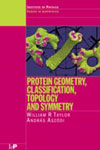Science

Curriculum Vitae
Current roles
2011-present: Training Specialist, Vienna Biocenter Core Facilities (VBCF), Vienna, Austria.
Provides biocomputing courses and biostatistics consulting at the Vienna Biocenter campus.2007-present: External expert, EU Research Executive Agency.
Evaluates MSCA individual fellowships, COFUND, RISE, FETHPC etc. applications.Previous positions
2006-2011: Senior bioinformatician, Institute for Molecular Pathology, Vienna, Austria.
Analysis of ChIP- chip and next-generation sequencing data. Development of analysis tools (e.g. multiple overlaps of genomic regions) and databases for next-generation sequencing. Regions/annotations database for bioinformatics data analysis.1996-2005: Lab Head, Unit Head, Novartis Institute of Biomedical Research, Vienna, Austria.
Development of new computational tools in bioinformatics (protein structure analysis, docking), systems biology (analysis of gene expression time series) and cheminformatics (molecular surface comparison, high-throughput conformation analysis). Established a computational workflow from target discovery to lead optimisation by combining bio- and chemoinformatics. Contributions to numerous drug discovery projects.1992-1996: Postdoctoral Researcher, Division of Mathematical Biology, National Institutes for Medical Research, London, UK.
Developed novel distance geometry-based methods for the analysis and prediction of protein structures.1991-1992: Postdoctoral Researcher, Institute of Enzymology, Budapest, Hungary.
Studied the sequence-structure relationships in transglutaminases.Education
1989-1991: PhD Studentship, ELTE University, Budapest, Hungary.
Thesis: “Molecular Mechanisms of Simple Learning Processes”. PhD degree "summa cum laude".1988-1989: Soros Scholar, Wadham College, University of Oxford, UK.
Genetic engineering at the NERC Institute of Virology and at the Department of Pharmacology. Nonlinear dynamics of mammalian neurons at the Department of Pharmacology and at the MRC Anatomical Neuropharmacology Unit.1983-1988: MSc in Chemistry, ELTE University, Budapest, Hungary.
Awarded "Eminent Student of the Faculty". MSc Diploma with distinction.List of publications
Book
 Taylor, W. R. and Aszódi, A. (2004):
Taylor, W. R. and Aszódi, A. (2004):
Protein Geometry, Classification,
Topology And Symmetry: A Computational
Analysis of Structure.
Institute of Physics Publishing (now Taylor and Francis Publishing Group).
Order the book from the publisher
Institute of Physics Publishing (now Taylor and Francis Publishing Group).
Order the book from the publisher
Patent
Aversa, G., Kolbinger, F., Carballido-Herrera, J. M., Aszódi, A., Saldanha, J. W. and Hall, B. M. (2010): Therapeutic binding molecules.US patent 07825222.
Peer-reviewed papers
Aszódi, A. and Friedrich, P. (1987):Molecular kinetic modeling of associative learning.
Neuroscience 22, 37-48.
Friedrich, P. and Aszódi, A. (1989):
Cyclic AMP turnover and signal amplification.
Biochem. J. 257, 621-623.
Keszei, E., Aszódi, A., Balázs, L. and Borosy, A. P. (1990):
Extrapolation to infinite dilution using a least-squares estimation.
J. Chem. Educ. 67, 566-568.
Friedrich, P., Ádám, G., Aszódi, A. and Asztalos, Z. (1990):
Mechanistic aspects of the learning memory deficit of dunce mutants of Drosophila.
Biol. Chem. Hoppe-Seylers (now Biological Chemistry) 371 , 14.
Aszódi, A., Müller, U., Friedrich, P. and Spatz, H. C. (1991):
Signal convergence on protein kinase A as a molecular correlate of learning.
Proc. natl. Acad. Sci. USA 88, 5832-5836. PDF
Friedrich, P. and Aszódi, A. (1991):
MAP2 - a sensitive cross-linker and adjustable spacer in dendritic architecture.
FEBS Letters 295, 5-9. PDF
Aszódi, A., Crunelli, V. and Soltész, I. (1992):
Detecting changes in neuronal activities induced by N-methyl-D-aspartate receptor blockade using nonlinear dynamics techniques.
Neuroscience 46 , 785-791.
Friedrich, P. and Aszódi, A. (1992):
Calcium-dependent proteolysis and isopeptide bond formation - calpains and transglutaminases.
Pure Appl. Chem. 64 , 1093-1097.
Friedrich, P. and Aszódi, A. (1993):
Calpains and transglutaminases - common features in structure, mechanism and functions.
Indian J. Chem. (Section B), 32, 181-185.
Aszódi, A. and Taylor, W. R. (1993):
Connection topology of proteins.
Comput. Appl. Biosci. (now Bioinformatics) 9, 523-529.
Aszódi, A. and Taylor, W. R. (1994):
Folding polypeptide alpha-carbon backbones by distance geometry methods.
Biopolymers 34, 489-505.
Pintér, M., Aszódi, A., Friedrich, P. and Ginzburg, I. (1994):
Calpeptin, a calpain inhibitor, promotes neurite elongation in differentiating pc12 cells.
Neurosci. Lett. 170, 91-93.
Aszódi, A. and Taylor, W. R. (1994):
Secondary structure formation in model polypeptide chains.
Protein Engng. 7, 633-644.
Aszódi, A. and Taylor, W. R. (1995):
Estimating polypeptide alpha-carbon distances from multiple sequence alignments.
J. Math. Chem. 17, 167-184.
Aszódi, A., Gradwell, M. J. and Taylor, W. R. (1995):
Global fold determination from a small number of distance restraints.
J. Mol. Biol. 251, 308-326. PDF
Werner, E., Holder, A. A., Aszódi, A. and Taylor, W. R. (1996):
A novel 11-residue coiled-coil motif predicts a histidine zipper.
Protein & Peptide Letters 3, 139-145.
Aszódi, A. and Taylor, W. R. (1996):
Homology modelling by distance geometry.
Folding & Design (now Structure) 1, 325-334.
Aszódi, A. and Taylor, W. R. (1997):
Hierarchic inertial projection: A fast distance matrix embedding algorithm.
Computers & Chemistry 21, 13-23.
Aszódi, A., Munro, R. E. J. and Taylor, W. R. (1997):
Distance geometry based comparative modelling.
Folding & Design (now Structure) 2 , S3-S6.
Aszódi, A., Munro, R. E. J. and Taylor, W. R. (1997):
Protein modelling by multiple sequence threading and distance geometry.
Proteins Suppl. 1, 38-42.
Taylor, W. R., May, A. C. W., Brown, N. P. and Aszódi, A. (2001):
Protein structure: geometry, topology and classification.
Rep. Prog. Phys. 64, 517-590.
Höfinger, S., Schindler, T. and Aszódi, A. (2002):
Parallel global optimization of high-dimensional problems.
Lecture Notes in Computer Science 2474, 148-155. PDF
Billich, A., Aschauer, H., Aszódi, A. and Stũtz, A. (2004):
Percutaneous absorption of drugs used in atopic eczema: pimecrolimus permeates less through skin than corticosteroids and tacrolimus.
Int. J. Pharm. 269, 29-35. PDF
Hofbauer, C., Lohninger, H. and Aszódi, A. (2004):
SURFCOMP: A novel graph-based approach to molecular surface comparison.
J. Chem. Inf. Comput. Sci. 44, 837-847. PDF
Meisner, N.-C., Hackermüller, J., Uhl, V., Aszódi, A., Jaritz, M., Auer, M. (2004):
mRNA openers and closers: Modulating AU-rich element-controlled mRNA stability by a molecular switch in mRNA secondary structures.
ChemBioChem. 5, 1432-1447. PDF
Hofbauer, C. and Aszódi, A. (2005):
Sh2 binding site comparison - A new application of the SURFCOMP method.
J. Chem. Inf. Model. 45, 414-421. PDF
Loferer, M.J., Kolossváry, I. and Aszódi, A. (2007):
Analyzing the performance of conformational search programs on compound databases.
J. Mol. Graph. Model. 25, 700-710. PDF
Pauler, F. M., Sloane, M. A., Huang, R., Regha, K., Koerner, M. V., Tamir, I., Sommer, A., Aszódi, A, Jenuwein, T. and Barlow, D.P. (2009):
H3K27me3 forms BLOCs over silent genes and intergenic regions and specifies a histone banding pattern on a mouse autosomal chromosome.
Genome Research 19, 221-233. PDF
Hekimoglu-Balkan, B., Aszódi, A., Heinen, R., Jaritz, M., and Ringrose, L. (2012):
Intergenic Polycomb target sites are dynamically marked by non-coding transcription during lineage commitment.
RNA Biology 9, 314-325. PDF
Aszódi, A. (2012):
MULTOVL: Fast multiple overlaps of genomic regions.
Bioinformatics 28, 3318-3319. --> Free preprint (PDF)
Peer-reviewed conference contributions
Renner, A. and Aszódi, A. (2000):High-throughput functional annotation of novel gene products using document clustering.
Pacific Symposium on Biocomputing 5, 54-65. PDF
Renner, A., Lapp, H. and Aszódi, A. (2000):
High-throughput functional assignment for novel gene products using annotation clustering.
Frontiers of Science Series 30 (Currents in Computational Molecular Biology), 40-41.
Hackermüller, J., Meisner, N.-C., Aszódi, A., Auer, M. and Jaritz, M. (2002):
Towards a functional classification of ARE protein interactions.
Genome Informatics Series 13, 326-327.
Book chapters
Taylor, W. R. and Aszódi, A. (1994):Building protein folds using distance geometry: Towards a general modelling and prediction method.
In: Merz, K. M., Jr. and LeGrand, S. M. (eds): The Protein Folding Problem and Tertiary Structure Prediction, 165-192.
Birkhäuser, Boston
Taylor, W. R. and Aszódi, A. (1994):
Modelling and predicting protein structure using distance geometry.
In: Bohr, H. and Brunak, S. (eds): Protein Structure by Distance Analysis, 213-221.
IOS Press, Amsterdam
Aszódi, A. and Taylor, W. R. (1994):
Modelling secondary structure formation by distance geometry techniques.
In: Bohr, H. and Brunak, S. (eds): Protein Structure by Distance Analysis , 222-236.
IOS Press, Amsterdam
Researcher IDs
